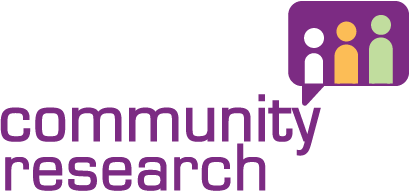Face to face research - is it the right time to return?
At Community Research, we have been offering purely online approaches since the start of the pandemic. Of course we haven’t wanted to put our participants or our researchers at any risk. But, with restrictions lifted, it is time for us to review this. We are keen to get back and speak to people in person if and when there are clear advantages. Of course, in doing so we will, as ever, be mindful of the the latest guidance from the MRS.
Practical considerations
In thinking about returning to face to face research, we have spoken to our recruitment partners and it’s clear that some things have changed since the last time we ventured out to run a focus group or undertaken an in-person interview, including:
We’ll need to pay slightly higher incentives - the rise of hybrid working means fewer people are in city-centre locations… which in turn means that travelling to venues requires a little extra encouragement.
We’ll need to reconsider what times of day will work best for participants, given changing work patterns.
We might need to convene smaller group sizes, to encourage participants to feel less anxious about meeting with others face to face.
In short, as we begin to undertake this kind of work again, we will be listening carefully to those we recruit and making sure that our activities are as convenient, accessible and stress-free as possible. Since right now COVID is still circulating widely, we’ll also need to expect more last minute dropouts, meaning that we need to think about over-recruitment at higher numbers than than we might have done previously.
We’re also developing COVID protocols for those who do agree to come along. We’ll be giving clear instructions on requirements - asking all participants to conduct lateral flow tests before attending; informing people about a venue’s policy on wearing (or not wearing) masks and we’ll only be using venues with strong COVID protocols in place. In order to get that all-important informed consent from participants, all of these arrangements will need to be made clear well in advance.
Pros and Cons
Given that online techniques have worked so well and that we have managed very well without them for the last 2 years; when and why would we go back to meeting people face to face then?
In reality, we don’t think face to face approaches will ever return to being the default they once were…..but they can be brilliant for allowing researchers really to explore and understand people’s experiences and perspectives at a different level. By allowing us to observe participants’ non-verbal behaviours (facial expressions, body language and so on) they can enable us to unpick contexts, motivators and barriers more sensitively. Face to face research can help us to get under the skin of things that people do not necessarily recognise themselves or readily talk about. It allows for a more personal touch. This might be particularly important, for example, when exploring a traumatic or sensitive issue - ensuring participant-led discussions and using techniques that allow participants to talk comfortably in the abstract / third person. In some cases, when interviewing people in vulnerable circumstances or on sensitive or personal topics, there is nothing better than face to face, one to one interviews.
Face to face group-based approaches also work really well if you want to engender collaborative working towards a solution e.g. for creative exercises. We have attempted to conduct brainstorming and idea-generation activities online and it can be done…but it is not as easy or as effective, in our view, as the collaborations conducted in a real room, with a live group’s energy and dynamism!
Of course face to face research also allows us to reach those who are not online – a small but vitally important part of the population who have unfortunately mostly been left out of research activities for the last couple of years (other than through telephone research).
The pandemic has resulted in a massive shift in all of our behaviours and our acceptance and use of online methods of communication. In the research industry this has resulted in a step-change in how often online approaches are used and the way we undertake online research has definitely improved - we have learned a great deal. We’ve written previous articles about how well this has been working for us. For many participants - e.g., those with mobility issues and those who find face to face sessions daunting, these approaches are also preferable.
However, now that we are once again able to use face to face techniques as part of our toolkit we will certainly be looking forward to getting back out there!

